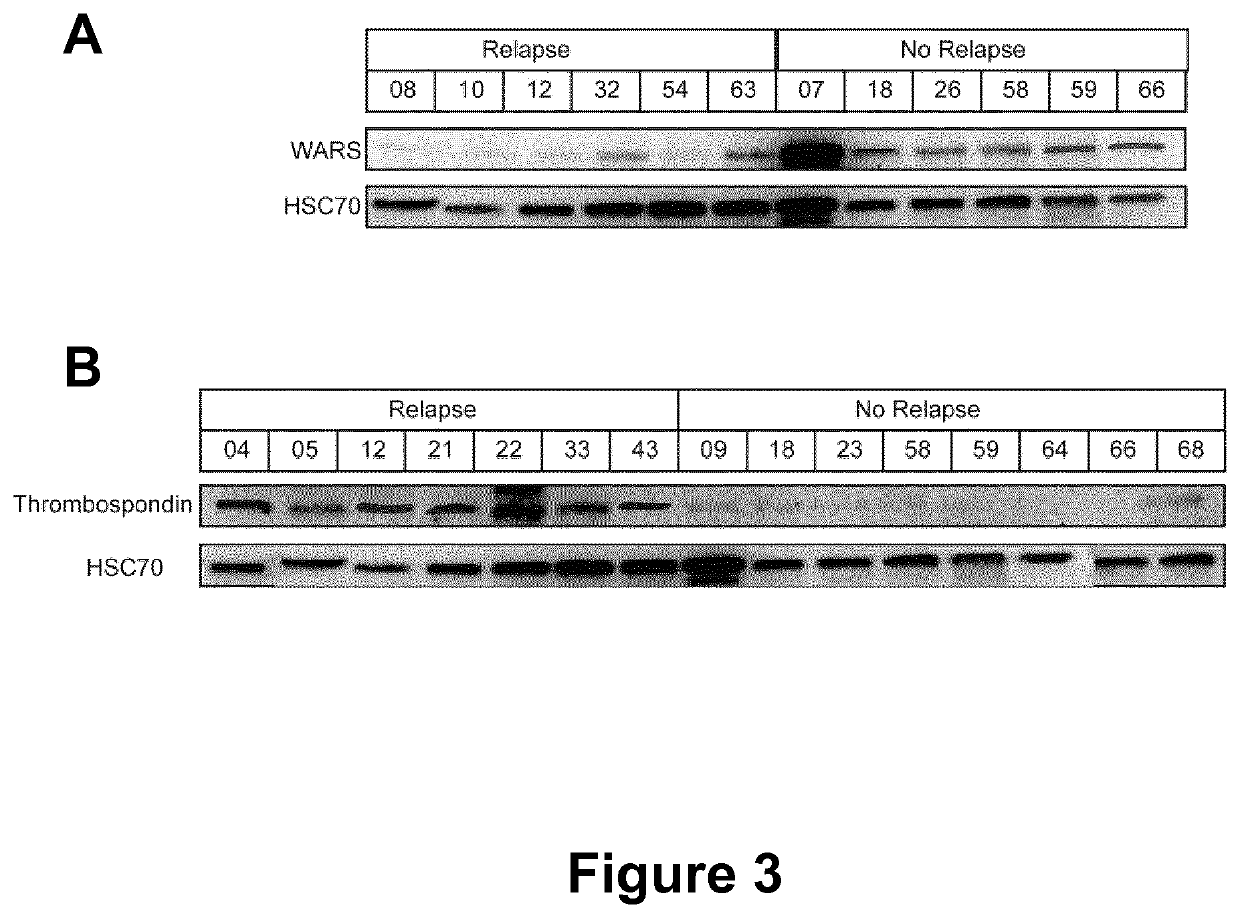Method for in vitro diagnosing and prognosing of triple negative breast cancer recurrence
a triple-negative breast cancer and in vitro diagnosis technology, applied in the field of in vitro diagnosis and prognosis of triple-negative breast cancer recurrence, can solve the problems of triple-negative breast cancer not being responsive to usual endocrine therapy, affecting the survival rate of patients, and a major cause of death for breast cancer
- Summary
- Abstract
- Description
- Claims
- Application Information
AI Technical Summary
Benefits of technology
Problems solved by technology
Method used
Image
Examples
examples
1. Materials and Methods
[0126]1.1. Sample Collection
[0127]The inventors selected cases of triple negative breast tumors (TNBC) that were surgically resected with curative intent in the West Cancer Institute tumor bank. All patients provided informed consent for participation and this project was approved by the Institutional Review Board. All specimens were collected immediately after surgery, snap frozen and stored in liquid nitrogen until the time of analysis. We also selected 4 normal macroscopically areas for our control pool. Frozen sections (12 μm thick) of either TNBC or normal areas were cut on a cryostat (Bright Instrument Co Ltd, St Margarets Way, UK). Specific sections were stained with toluidine blue for visual reference and each tissue sections from all specimens were evaluated by experienced pathologists for cancer cell proportion determination. Samples containing less than 80% of tumor cells were removed. Clinical features of tissue candidates are summarized in Table ...
PUM
| Property | Measurement | Unit |
|---|---|---|
| thick | aaaaa | aaaaa |
| pH | aaaaa | aaaaa |
| volume | aaaaa | aaaaa |
Abstract
Description
Claims
Application Information
 Login to View More
Login to View More - R&D
- Intellectual Property
- Life Sciences
- Materials
- Tech Scout
- Unparalleled Data Quality
- Higher Quality Content
- 60% Fewer Hallucinations
Browse by: Latest US Patents, China's latest patents, Technical Efficacy Thesaurus, Application Domain, Technology Topic, Popular Technical Reports.
© 2025 PatSnap. All rights reserved.Legal|Privacy policy|Modern Slavery Act Transparency Statement|Sitemap|About US| Contact US: help@patsnap.com



